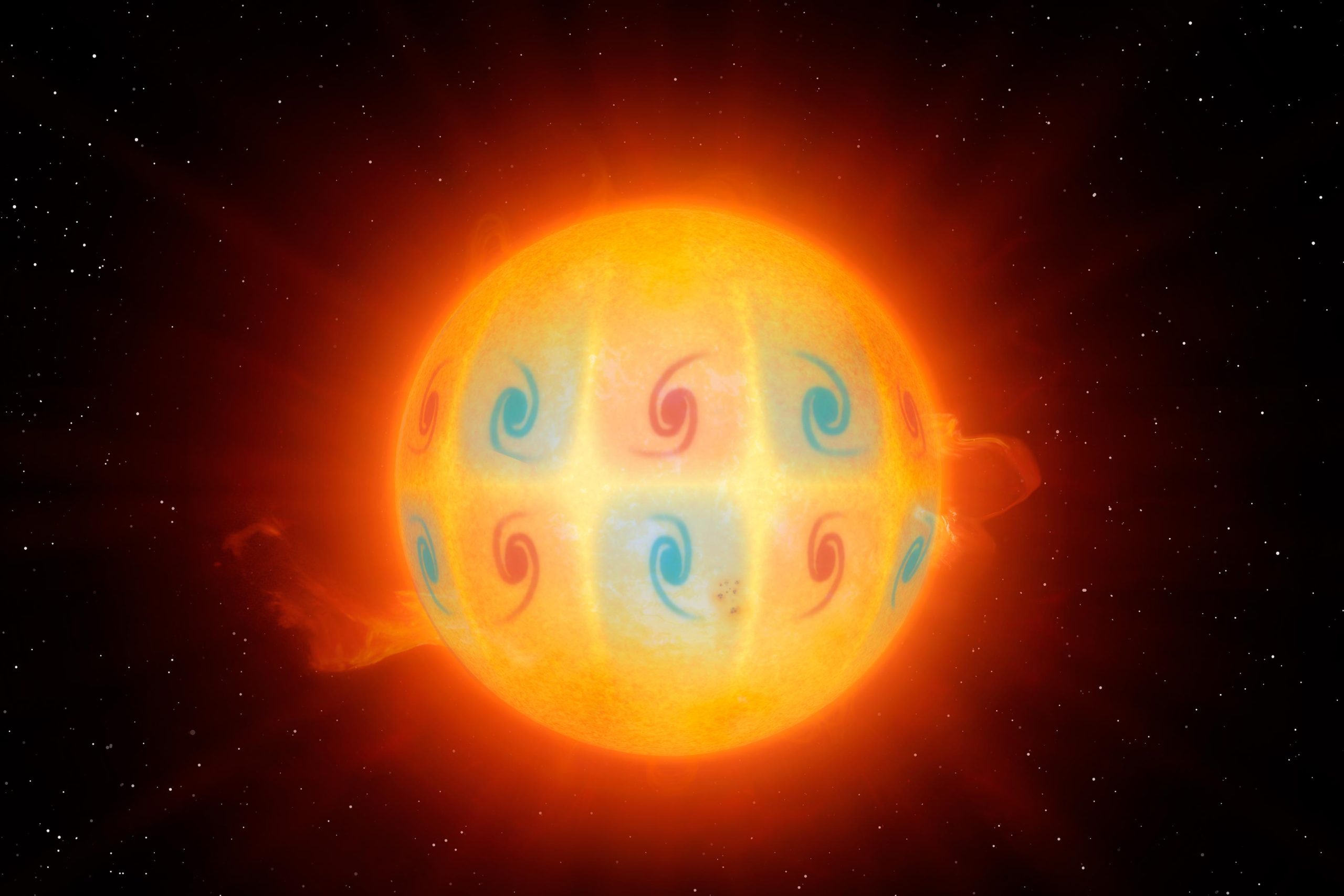

An artistic impression of high-frequency eddy waves (HFR). These waves appear as circular motions near the equator of the Sun. The rotation in the north is always asymmetrical to the rotation in the southern hemisphere. These mysterious waves are moving in the direction opposite to the rotation of the Sun, which is to the right, three times faster than hydrodynamics alone would allow. Credit: New York University Abu Dhabi
Researchers from New York University Abu Dhabi’s (NYUAD) Space Science Center have discovered a new set of waves in the Sun that, unexpectedly, appear to be traveling much faster than theory predicted.
In the study, High-frequency vortex waves detected in the sunPublished in the magazine natural astronomyThe researchers – led by Research Associate Chris S Hanson – detailed how they analyzed 25 years of space and terrestrial data to detect these waves. High-frequency retrograde waves (HFR) – which move in the opposite direction of the Sun’s rotation – appear as a pattern of vortices (spinning motions) on the Sun’s surface and move at three times the speed determined by current theory.
The interior of the Sun and stars cannot be imaged by conventional astronomy (such as optical rays, X-rays, etc.), and scientists rely on interpreting surface signatures of a variety of waves to image the interior. These new HFRs may be an important puzzle piece in our understanding of stars.
Complex interactions between other known waves and magnetic, gravitational, or convective waves can drive HFR waves so quickly. “If the HFRs could be attributed to any of these three processes, the result would have answered some of the open questions we still have about the Sun,” Hanson said. “However, it does not appear that these new waves were a result of these processes, which is exciting because it leads to a whole new set of questions.”
This research was conducted at the NYU Abu Dhabi Space Science Center in collaboration with the Tata Institute for Fundamental Research (TIFR) and[{” attribute=””>New York University, using NYUAD and TIFR’s computational resources. By studying the Sun’s interior dynamics — through the use of waves — scientists can better appreciate the Sun’s potential impact on the Earth and other planets in our solar system.
“The very existence of HFR modes and their origin is a true mystery and may allude to exciting physics at play,” said Shravan Hanasoge, a co-author of the paper. “It has the potential to shed insight on the otherwise unobservable interior of the Sun.”
Reference: “Discovery of high-frequency-retrograde vorticity waves in the Sun” 24 March 2022, Nature Astronomy.
DOI: 10.1038/s41550-022-01632-z

“Avid problem solver. Extreme social media junkie. Beer buff. Coffee guru. Internet geek. Travel ninja.”





More Stories
In Greece Porsche 911 50th Anniversary – How much does it cost?
PS Plus: With a free Harry Potter game, the new season begins on the service
Sony set to unveil PS5 Pro before holiday season – Playstation